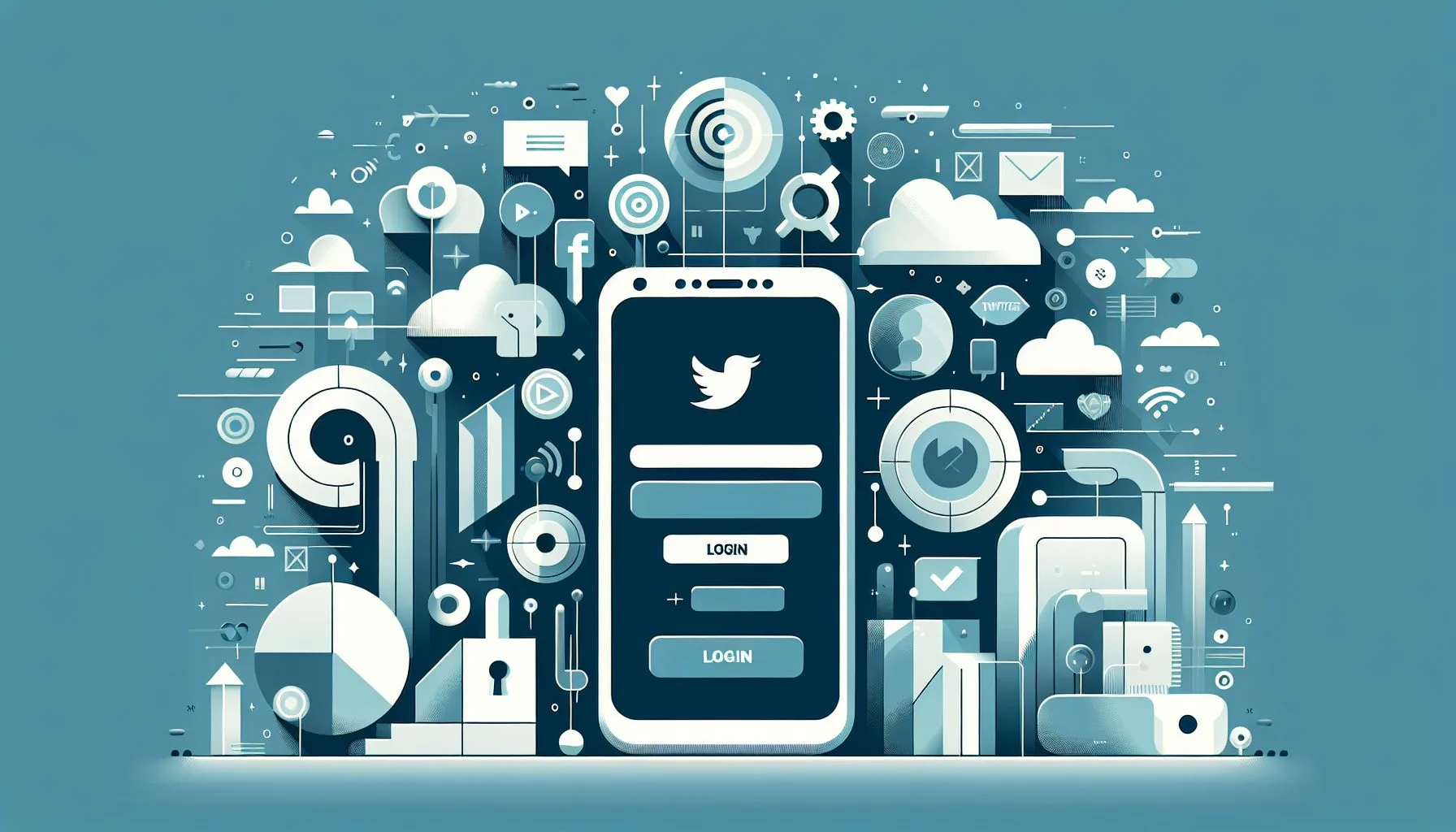Interesting Facts
Losing access to your Twitter account can feel unsettling, like misplacing a precious key to a vibrant, digital community you’ve come to rely on. Whether you use Twitter to stay informed, connect with friends, or simply express your thoughts, finding yourself locked out can disrupt your daily rhythm and leave you feeling isolated. Fortunately, Twitter offers clear and user-friendly paths to help you recover your account and regain your voice in the ever-buzzing online conversation. Knowing what steps to take and how to navigate this process will make all the difference in quickly getting back online.
How to Get Your Twitter Account Back: The Basics
When you first realize you can’t log into your account, a common and pressing question arises: How do I get my Twitter account back? The answer isn’t a simple one-size-fits-all solution. Instead, it depends on the specific issue you’re facing. The general situations include forgotten passwords, locked accounts, or suspended accounts. Each case has its unique challenges, but the good news is that Twitter designs tools and workflows to assist users in reclaiming their profiles.
Forgot Password? Here’s Your First Step
If you suddenly find yourself stuck at the login screen, unable to recall your password, the easiest and most straightforward tool at your disposal is Twitter’s “Forgot Password” feature. This function exists precisely to help those who have misplaced their credentials without causing unnecessary frustration. The process involves entering your username, email address, or phone number linked to your profile. Twitter then sends a verification code to your email or as a text message, which you use to create a new password. This swift solution works best when your contact details are current and accessible — a small but crucial detail that many sometimes overlook. You can learn more about this step in detail by visiting the how to recover a suspended Twitter account guide.
Need help recovering your Twitter account?
When Contact Details Are Out of Date
But what if you no longer have access to the email or phone number connected to your Twitter account? Perhaps you switched phone numbers, changed your email provider, or simply forgot to update your details. In such cases, recovering your account becomes more nuanced but certainly not impossible.
Twitter’s system recognizes these complications and offers alternative ways to verify your identity. You might be asked to provide additional personal information or evidence to prove that you truly own the account. This can require patience, as the process is built to prevent unauthorized access and protect everyone’s privacy. While it might seem cumbersome, remember that these security steps are there to safeguard your digital identity. Detailed personal experiences and tips can be found in this Reddit discussion on getting a suspended Twitter account back.
When Your Account Is Locked
Sometimes, you might find that your account is locked unexpectedly. This often happens when Twitter’s automated systems detect unusual activity or potential violations of their policies. A locked account blocks you from posting, liking, or even viewing some parts of your timeline until the issue is resolved. Such restrictions can feel frustrating, especially if you’re unsure why it happened.
To unlock your account, Twitter usually asks you to confirm that you’re the real owner. This might involve steps like verifying your email address or phone number, or agreeing to Twitter’s rules and guidelines. It’s their way of ensuring your account wasn’t compromised and that you’re aware of the community standards. Though these interruptions can be inconvenient, they’re designed to maintain Twitter as a safe and trustworthy platform. For official guidance on managing locked accounts, see Twitter’s own locked and limited accounts support page.
Understanding Suspensions and What You Can Do
In more serious cases, accounts get suspended. Suspensions occur when Twitter finds that an account has broken its rules, such as spamming followers, engaging in abusive behavior, or sharing forbidden content. Having your account suspended can be disheartening, especially if you believe it was by mistake.
If you feel your suspension was unjust, Twitter provides an option to appeal the decision. This involves filling out a form and clearly explaining why you think the suspension should be reconsidered. Honesty and respect in your appeal often help, though patience is essential since responses can take several days or even longer depending on the number of cases in the queue.
While waiting, it can be helpful to review Twitter’s policies yourself. Understanding what might have triggered the suspension will not only prepare you for communication with Twitter, but also help avoid future issues once your account is restored. Additional insights on appealing suspensions can be found at Twitter suspension appeal resources.
Keep Your Contact Information Up to Date
A valuable piece of advice from those who have successfully regained access to their Twitter accounts is to always keep your contact information current. Email addresses and phone numbers can change, and if you haven’t updated these details on Twitter, they become hurdles during recovery. Taking a simple moment to verify and, if necessary, update your phone number and email can save a great deal of stress later on.
Regular checks — for example, every few months — can become part of your digital routine, much like changing passwords or updating software. These small habits add layers of protection to your account and make retrieval smoother if something ever goes wrong. For businesses or users interested in professional help, Viral Accounts offers various services including account management and security enhancements.
Boost Your Account Security with Two-Factor Authentication (2FA)
Once you’ve regained access to your Twitter profile, it’s wise to enhance your security measures by enabling Two-Factor Authentication (2FA). This feature adds a second step to the login process, typically sending a code to your phone or generating one via an authentication app.
While 2FA introduces an extra task during login, it greatly reduces the risk of hackers gaining control of your account or you being locked out again. Think of it as a sturdy lock followed by a security guard checking your ID — extra caution that pays off with peace of mind. You can also discover helpful tips on account security at Viral Accounts’ help blog.
When to Contact Twitter Support
Despite Twitter’s automated tools and processes, some situations may feel too complex to resolve on your own. If you find the usual steps don’t work or your problem is unique, turning to Twitter Support directly can bring relief. When you reach out, providing as much information as possible helps speed things along: your username, email addresses tied to the account, phone numbers, and a clear, concise description of the problem.
Keep in mind that support teams handle large volumes of requests. Your polite and detailed communication can help them assist you more effectively. Remember, the people behind support are there to help, and a cooperative approach often makes the process smoother and less stressful.
The Emotional Toll and How to Navigate It
Losing access to a social media account may seem like a minor issue to some, but for many, it’s akin to losing touch with a close social network. Twitter is a place where friendships flourish, news spreads, and ideas ignite. Getting locked out can disrupt that connection and cause frustration or anxiety.
Approach the recovery journey with patience and calm. Reminding yourself that this is a common issue and that numerous users have come through it successfully may help soften the stress. A moment of frustration is natural, but maintaining composure ensures clearer thinking and better communication during the process.
Bringing It All Together
Regaining your Twitter account usually begins with the “Forgot Password” link, continues through identity verification steps, and if necessary, escalates to submitting an appeal or reaching out directly to support. Each phase demands patience and attention but is built to balance user accessibility with security.
Your online presence matters. Being back on Twitter means you can join conversations, share your stories, and remain a part of a larger community shaping views worldwide. Losing access is frustrating, but it’s rarely permanent.
If you’re facing this challenge now, take a deep breath and remember: your account isn’t lost forever. Digital platforms like Twitter have multiple ways to confirm your identity and help you regain entry. Once you’re back, consider setting reminders to update your contact details regularly and securing your account with stronger protections like two-factor authentication. These simple steps improve your account’s safety and minimize future headaches.
Ultimately, recovering your Twitter profile is a combination of persistence and knowing the right actions. With a little time and effort, you can reconnect with your network and continue contributing your voice to the global conversation. After all, every single voice deserves to be heard.
Additional Tips for Smooth Twitter Account Retrieval
- Check Your Spam Folder: Emails from Twitter, especially for password resets or verification codes, sometimes end up in the spam or junk folder of your email client. Before assuming the email hasn’t arrived, double-check those folders.
- Use the Correct Username or Email: When initiating password resets or identity verifications, make sure to use the exact username or email associated with your Twitter account. Attempting recovery with outdated or wrong information may delay the process.
- Beware of Phishing Attempts: During your recovery, you might receive emails or messages claiming to be from Twitter asking for your password or other sensitive information. Official Twitter communications will never ask you for your password directly. Always verify the sender and avoid clicking links in suspicious emails.
- Update Associated Apps and Devices: Sometimes, you might get locked out because of unusual login attempts from connected third-party apps. Regularly reviewing which apps have access to your Twitter and revoking unwanted ones can help maintain security.
- Keep Login History in Mind: Twitter’s settings include a way to see login history. If you spot unfamiliar locations or devices, this could indicate your account was compromised, signaling an urgent need to reset your password and check your security settings.
- Use Strong, Unique Passwords: When resetting your password, choose a strong, unique password that you don’t use elsewhere. This small habit significantly reduces the risk of hacking.
By weaving these habits into your digital routine, you not only help protect your Twitter account but also build a foundation for quicker recovery should you ever run into trouble again.
Recovering your Twitter account might feel like decoding a puzzle at first, but with clear guidance and steady steps, it becomes manageable. Each obstacle has a solution waiting, and with persistence, the vibrant conversations and connections that Twitter holds will be yours once more.
What should I do if I forget my Twitter password?
Use Twitter’s “Forgot Password” feature by entering your username, email, or phone number to receive a verification code and reset your password quickly.
How can I unlock my Twitter account if it’s locked?
Confirm your identity by verifying your email or phone number and agreeing to Twitter’s rules to unlock your account.
What if my Twitter account is suspended?
You can appeal the suspension by submitting a form explaining your situation respectfully; wait patiently for Twitter’s response while reviewing their policies.

